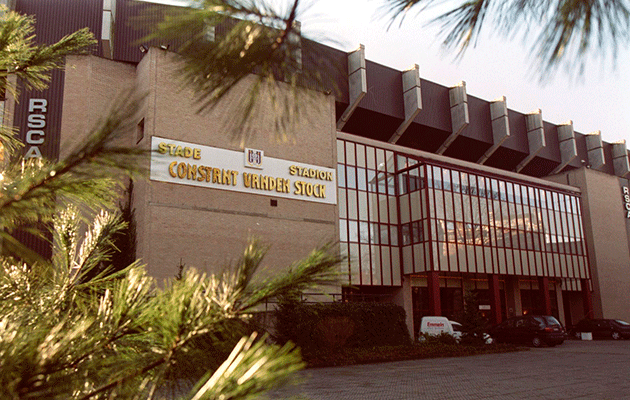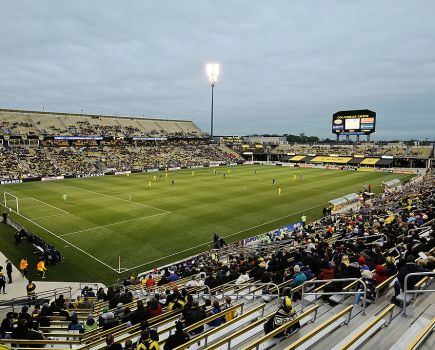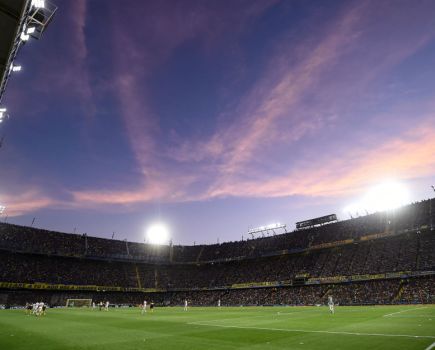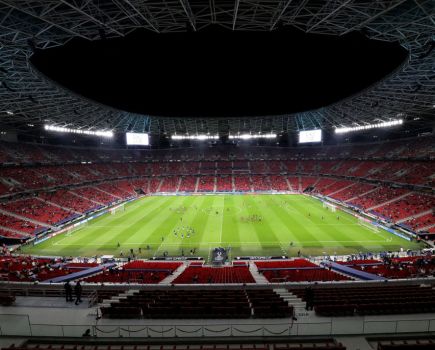Brussels is one of 150 soccer cities featured in Libero, the digital travel guide for football fans. Regularly refreshed with new destinations and the travelogue Soccer Sagas, Libero is a one-click treasure trove of football trip tips, tales and trivia. See www.liberoguide.com/brussels.
Anderlecht/Stade Constant Vanden Stock, Anderlecht v Spurs, Europa League, Thursday Oct 22/1900 CET-1800 UK time; Anderlecht-Club Bruges, Belgian League, Sunday Oct 25/1430pm CET-1330 UK time
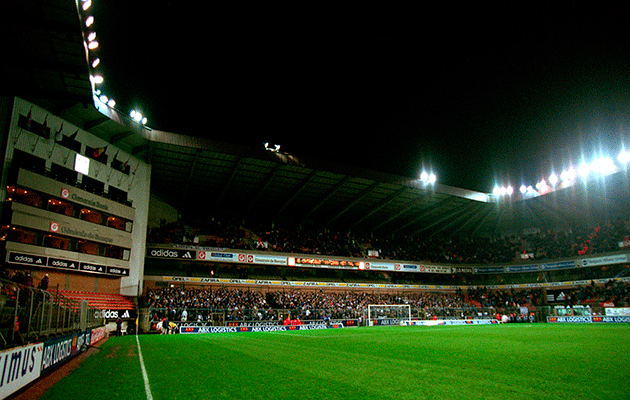
When Brussels was announced as a host city of Euro 2020, thoughts turned to Heysel, synonymous with the tragic European Cup Final of 1985. After years of recriminations, Belgium’s national stadium was rebuilt a decade later as the Stade Roi Baudouin. It was welcomed back into the international fold with the staging of Euro 2000.
For Euro 2020, when builders begin on the site in 2016, it won’t be to renovate or revamp the Roi Baudouin, but to create an entirely new venue: Eurostadium Brussels. Eurostadium will not only create a 62,000-capacity national stadium but will mean the uprooting of the city’s flagship football club, Anderlecht, after more than a century in south-west Brussels.
Champions in 2014 for the third time running, Royal Sporting Club Anderlecht dipped in 2014-15 but remain the biggest club in Belgium. They’ve always represented the sombre and otherwise non-descript area of the same name.
Founded in 1908 at the Concordia café on rue d’Aumale, near their long-term home of the Parc Astrid (aka Stade Constant Vanden Stock), Anderlecht have been in the top flight since 1935.

A decade later came success thanks to Belgium’s first real star, Jef Mermans. Apparently Anderlecht officials came to the Antwerp suburb of Borherhout brandishing a blank cheque. Mermans led Les Mauves to league titles in the late 1940s and early 1950s.
Anderlecht suffered major defeats in early European campaigns – including a 10-0 drubbing by Manchester United – before the emergence of the great Paul van Himst. Les Mauves provided all eleven of the Belgian team who finished an international against Holland in 1964.
Six years later, Anderlecht beat Arsenal 3-1 in the home leg of the Fairs’ Cup Final, only to lose the return 3-0. European silverware came with the Cup-Winners’ Cup win of 1976, key players Rob Rensenbrink and Francois van der Elst scoring the goals in a 4-2 win over West Ham in Brussels. Rensenbrink scored two more when Anderlecht won the same trophy two years later.
By now, at the helm was Constant Vanden Stock, who had played alongside Mermans and whose family ran the Belle-Vue brewery. Appealing to the French-speaking local business community, Stock investing a fortune modernising the Parc Astrid, the first stadium on continental Europe with executive boxes. Success was crucial.
Having won the UEFA Cup in 1983, Anderlecht overcame a semi-final deficit against Nottingham Forest the next year. It has since been proved that Stock bribed Spanish referee Emilio Guruceta to help them gain a 3-0 win in Brussels. It did them little good in the final, losing to Spurs on penalties. A precocious Enzo Scifo kept Anderlecht in the running for major honours but a 1990 Cup-Winners’ Cup defeat to Sampdoria was their last European final.
Constant’s son Roger assumed chairmanship in 1996. After his father’s chicanery came to light, Anderlecht faced an image problem – exacerbated by the perception that RSCA represented French-speaking Belgium in a ever-divided country. In fact, in Brussels itself, Les Mauves can count on Walloons and Flemings in their fan base.
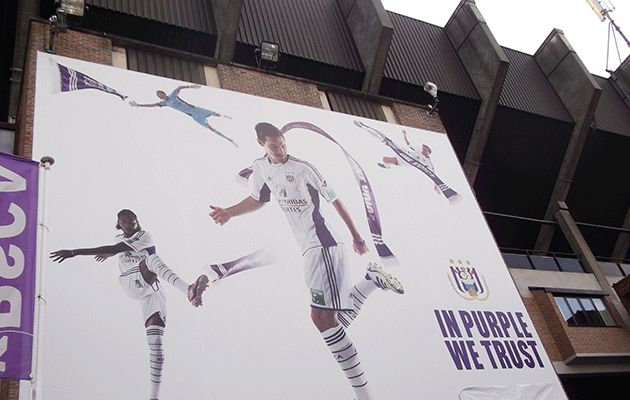
With traditional rivals Club Bruges off the pace in recent seasons, Anderlecht won the three titles on the trot, the last in 2014. With young Serb striker Aleksandar Mitrovic scoring the goals, and Silvio Proto stopping them, Les Mauves just nicked the title at the death.
Until Anderlecht move way up north to the Eurostadium, they will continue playing at the Stade Constant Vanden Stock. It has a capacity of 28,000, allowing for nearly 7,000 standing places. This is reduced on European nights by all-seater requirements.
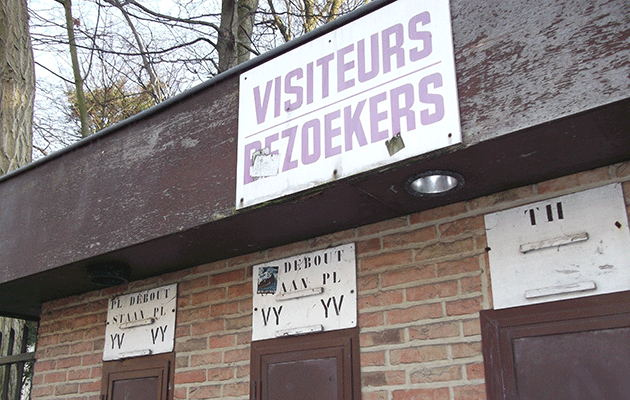
Home fans gather behind each goal, particularly standing in tribune 4 (green), with the neutral best seated in red tribune 3. Away fans are allocated places in tribune 1 (purple), accessed through gate 5, round the corner from the RSCA club shop.
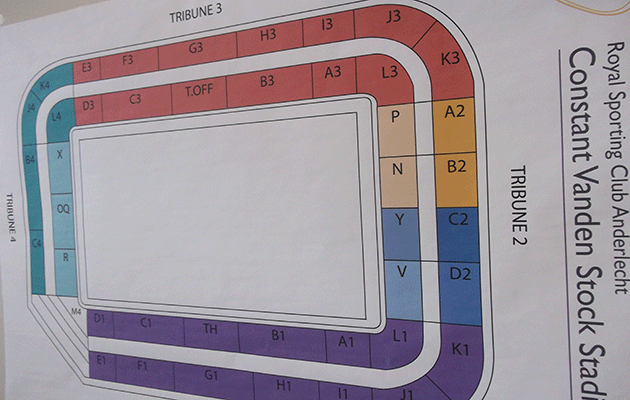
Sectors are given letters after their compass points, S1-S17 and N1-N17 behind each goal, E1-E17 and W1-W19 along the sidelines. The main entrance, club offices, ticket offices, shop and old public urinals are all on avenue Théo Verbeeck, along with a couple of quite wonderful football bars.
On the ground
The nearest metro is St-Guidon, on line 5 directly linked with Gare Centrale. Bus No.49 also runs from Gare du Midi to St-Guidon. From the metro station, turn right, then first right again up rue de la Procession – it’s about ten minutes altogether to the stadium.
Alternatively, bus No.46 calls at St-Guidon and, one stop later, De Linde, right alongside the ground. Note that away fans are sometimes requested to use the Aumale metro stop for security purposes.
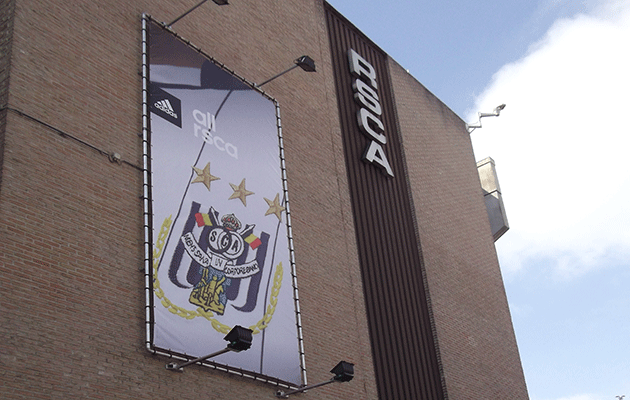
Such is the modest capacity of the Constant Vanden Stock that tickets are not always available for each game – the club website will have information. Usually a limited number are on sale from the Ticketing RSCA office (Mon-Fri 9am-5.30pm, Sat 10am-noon) on avenue Théo Verbeeck, a short walk between the club shop and the main stadium entrance. For an average league game, these range €22-€29 in price, €11 for under 16s. Champions League games are sold in a package of three for around €50-€75 a match.Some kind of ID may have to be produced upon purchase.
The club shop (Mon-Fri 10am-6pm, Sat 10am-2pm, match days 11am-8pm and 9.45pm-11pm) is at the north-west corner of the stadium where place de Linde meets avenue Théo Verbeeck – which is to say pretty much the first thing you come to walking from St-Guidon metro. Branded beach shorts and Norwegian-style woolly hats can be found amid the sea of mauve and white.

On rue de la Procession close to the stadium, standard bar La Mi-Temps (No.145) stands beside the best frites outlet, Le Stade (No.147). Facing the club shop on place de Linde, La Ruche fills its large interior with RSCA and Turkish football flags – there’s a terrace too.
Further along avenue Théo Verbeeck, a row of bars begins with Le Stade and ends with Le Fair-Play, taking in Le But, Green Park, filled with signed, framed players’ photos, and incomparable La Coupe (No.53), a cornucopia of Anderlecht adoration in the form of a colourful league ladder, fading pennants and Mermans-era line-ups.
At the stadium opposite, there’s a match-day bar by the press entrance, to the left of the club offices, and certain ticket holders have access to the in-house Saint-Guidon restaurant.

